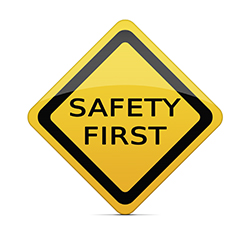Identify risks of infection

Identifying risk of infection is the process of examining potential sources of infection, potential transmission routes and potential hosts and how each may contribute to the spread of infection.
The first step in identifying risk of infection is by being aware of common sources of infectious micro-organisms. These include blood products, body fluids, secretions and excretions, broken skin and mucosal membranes. Once you know the source of infection risk it is then important to understand how that infection may spread from the source to the next host.
Common causes of disease transmission in the community services environment include:
- putting contaminated fingers and objects into your mouth, nose or eyes
- breathing in infectious pathogens from the air, such as respiratory discharges from a cough or sneeze
- contaminated dust or spray from air conditioning units
- procedures that involve splashes of blood and other body fluids into the eye and other mucous membranes
- micro-organisms making contact with broken skin
- needle-stick and other penetrating injuries
- biting and spitting from a contaminated person.
By being aware of these potential transmission routes you will be able to identify and prevent the risk of infection. If you identify a potential source of infection risk in your workplace it is important that you report it to your supervisor as soon as possible.